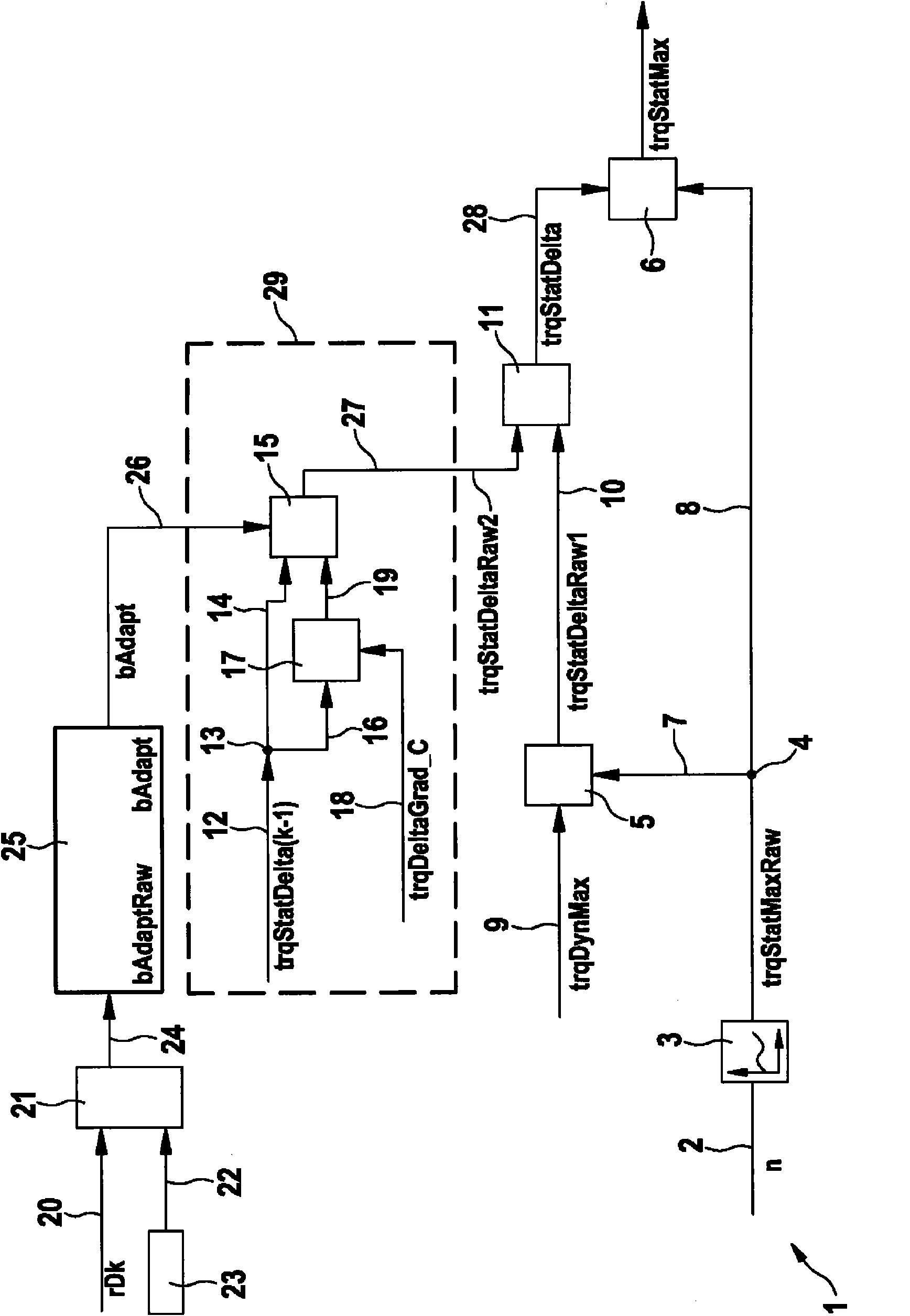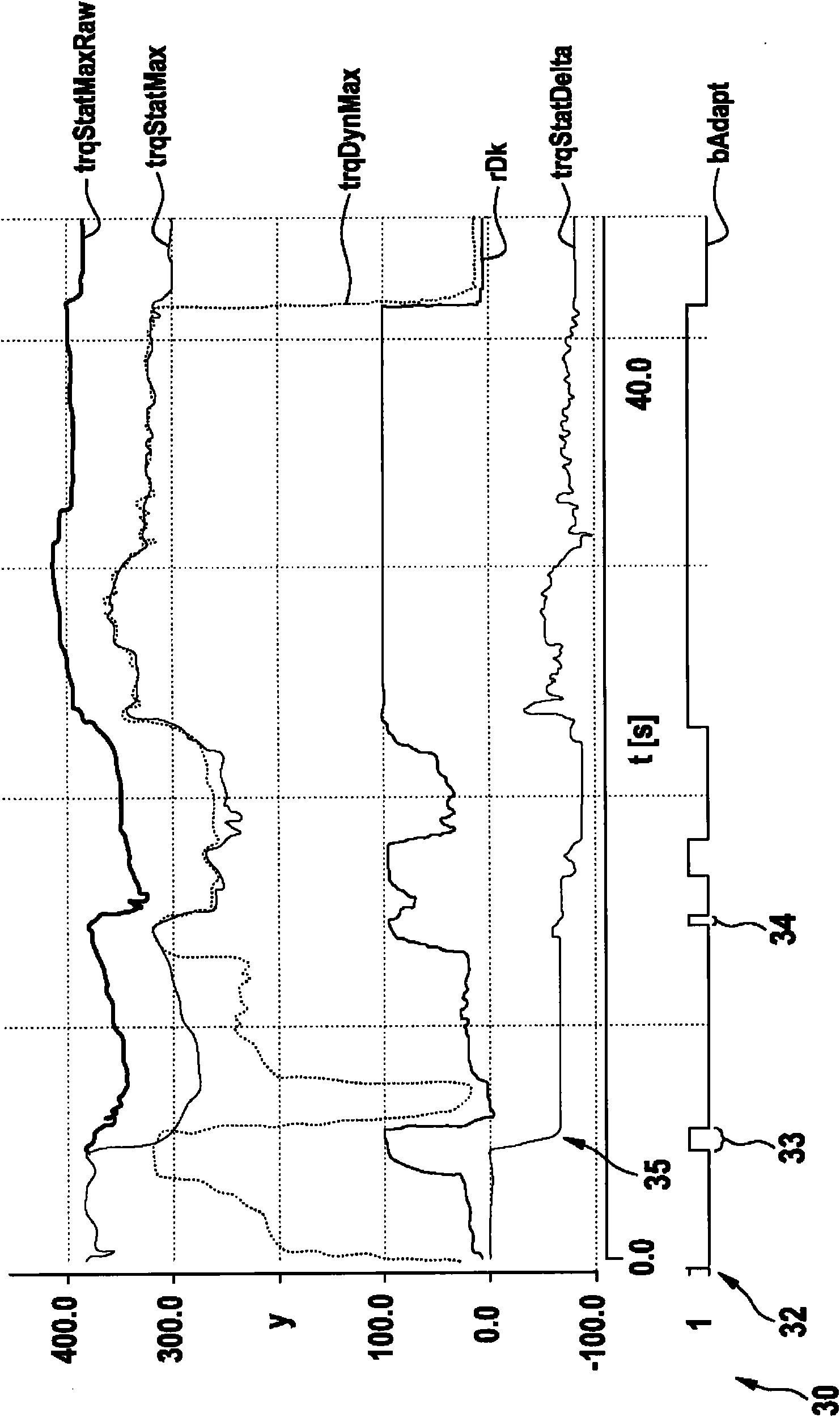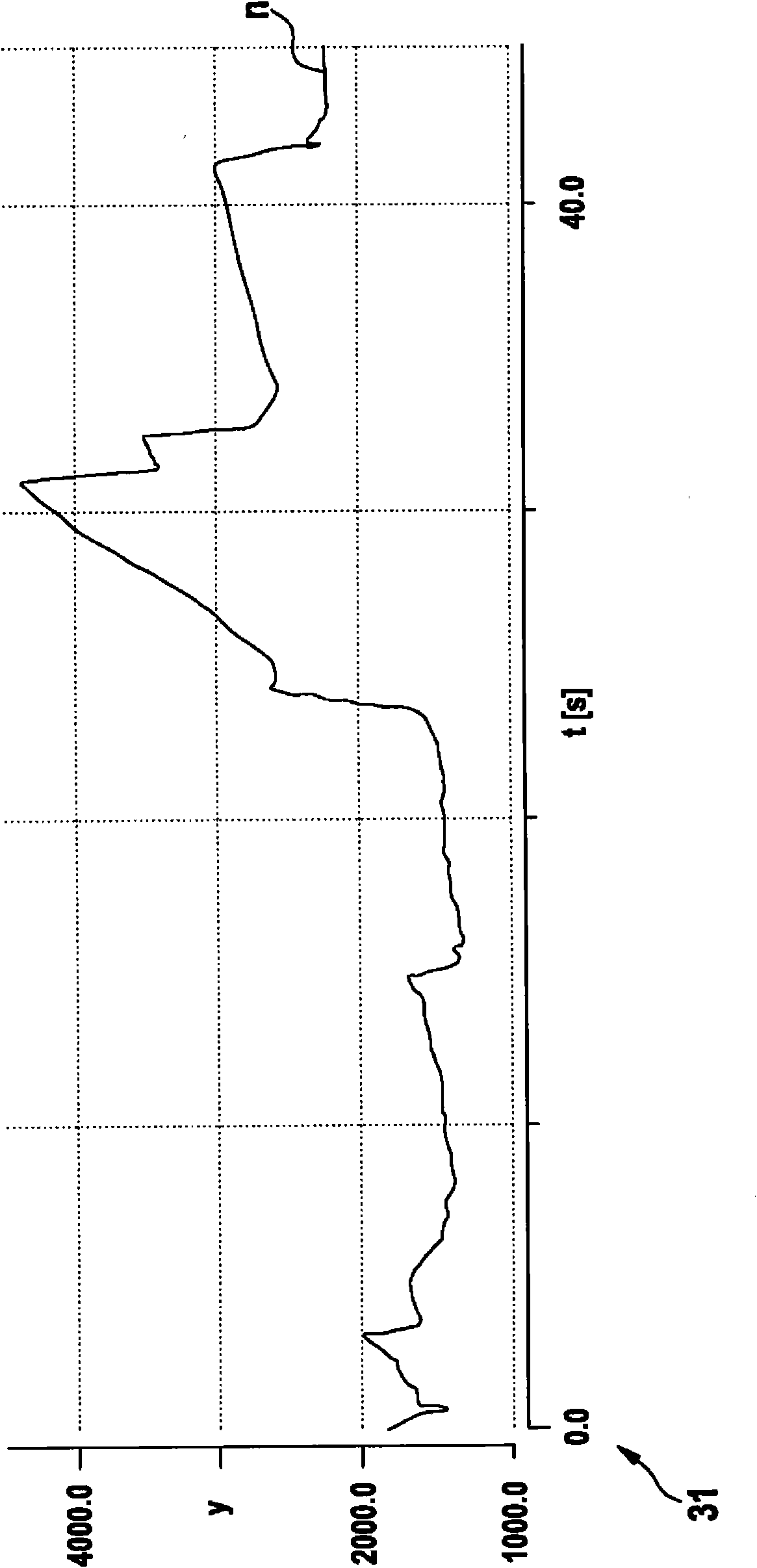Adaption of a stationary maximum torque of an internal combustion engine
A maximum torque, internal combustion engine technology, applied to internal combustion piston engines, combustion engines, motor vehicles, etc., can solve problems such as hindering control, contradictory data, and deviation from maximum torque
- Summary
- Abstract
- Description
- Claims
- Application Information
AI Technical Summary
Problems solved by technology
Method used
Image
Examples
Embodiment Construction
[0023] figure 1 An embodiment of the method according to the invention for the adaptation of the steady-state maximum torque is shown. This exemplary embodiment relates to a naturally aspirated Otto engine (not shown) with an electronic throttle valve and consists of calculation rules 1 which, in the sense of a scanning system, are executed periodically in individual scanning steps. In this case, the values calculated in scanning step k with cycle time T are stored and used in the following scanning step k+1. This makes it possible that the values calculated in the previous scanning step (k−1) and then stored can be used to calculate the value valid for the current scanning step k. Calculation rule 1 obtains speed n via arrow 2 , which is entered into characteristic curve 3 . Characteristic curve 3 determines the steady-state maximum torque trqStatMaxRaw, which is delivered to node 4 . Starting from node 4 , this steady-state maximum torque trqStatMaxRaw is transmitted ...
PUM
 Login to View More
Login to View More Abstract
Description
Claims
Application Information
 Login to View More
Login to View More - R&D
- Intellectual Property
- Life Sciences
- Materials
- Tech Scout
- Unparalleled Data Quality
- Higher Quality Content
- 60% Fewer Hallucinations
Browse by: Latest US Patents, China's latest patents, Technical Efficacy Thesaurus, Application Domain, Technology Topic, Popular Technical Reports.
© 2025 PatSnap. All rights reserved.Legal|Privacy policy|Modern Slavery Act Transparency Statement|Sitemap|About US| Contact US: help@patsnap.com



